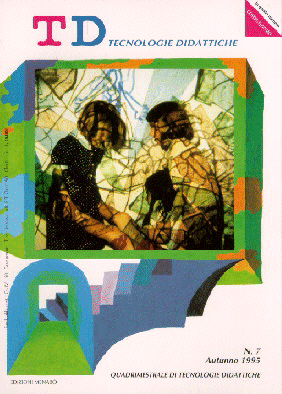Teaching movement with Boxer
Main Article Content
Abstract
Article Details
Section
Authors who publish with this journal agree to the following terms:
- Authors retain copyright and grant the journal right of first publication with the work simultaneously licensed under a Creative Commons CC BY 4.0 Attribution 4.0 International License.
- Authors are able to enter into separate, additional contractual arrangements for the non-exclusive distribution of the journal's published version of the work (e.g., post it to an institutional repository or publish it in a book), with an acknowledgement of its initial publication in this journal.
- Authors are permitted and encouraged to post their work online (e.g., in institutional repositories or on their website) prior to and during the submission process, as it can lead to productive exchanges, as well as earlier and greater citation of published work (See The Effect of Open Access)
References
Adams, S. and diSessa, A. A. (1991). Learning by cheating: Children’s inventive use of a Boxer microworld. Journal of Mathematical Behavior, 10(1), 79-89.
diSessa, A. A. (1989). A child’s science of motion: Overview and first results. In U. Leron and N. Krumholtz (Eds.), Proceedings of the Fourth International Conference for Logo and Mathematics Education. Haifa, Israel: Israeli Logo Center, Technion Israel Institute of Technology, 211-231.
diSessa, A. A. (1990). Social niches for future software. In M. Gardner, J. Greeno, F. Reif, A. Schoenfeld, A. diSessa & E. Stage (Eds.), Toward a Scientific Practice of Science Education, Hillsdale, NJ: Lawrence Erlbaum, 301-322.
diSessa, A. A. (1995). Collaborating via Boxer. In L. Burton and B. Jaworski (Eds.), Technology A Bridge between Teaching and Learning Mathematics. Bromley, Kent, UK: Chartwell-Bratt, 69-94.
diSessa, A. A. (1995). Designing Newton’s laws: Patterns of social and representational feedback in a learning task. In R.-J. Beun & M. Reiner (Eds.), Natural Dialog and Interactive Student Modeling.Heidlberg: Springer-Verlag.
diSessa, A. A., Hammer, D., Sherin, B. & Kolpakowski, T. (1991). Inventing graphing: Meta-representational expertise in children. Journal of Mathematical Behavior, 10(2), 117-160.
Metz, K. E., & Hammer, D. M. (1993). Learning physics in a computer microworld: In what sense world? Interactive Learning Environments, 3(1), 55-76.
Sherin, B., diSessa, A. A., & Hammer, (1992). Programming as a language for learning physics. Paper presented at the annual meeting of the American Educational Research Association.
Sherin, B., diSessa, A. A., & Hammer, (1993). Dynaturtle revisited: Learning physics via collaborative design of a computer model. I nteractive Learning Environments, 3(2), 91-118.

